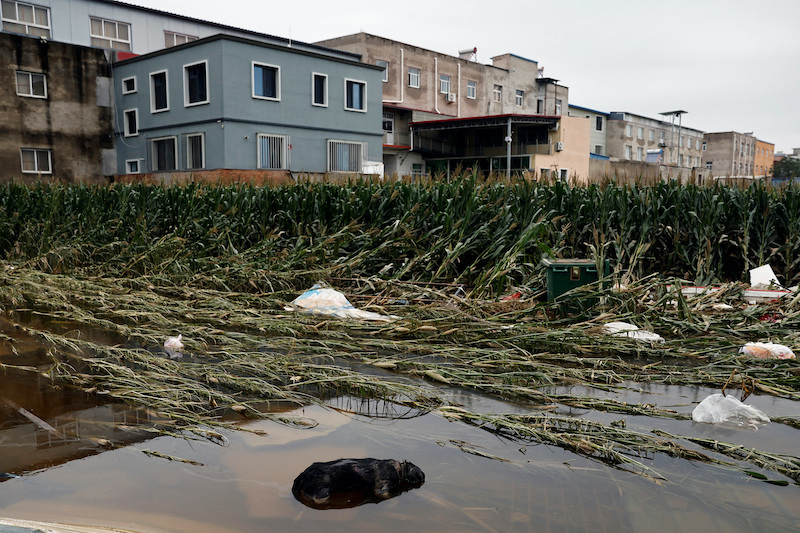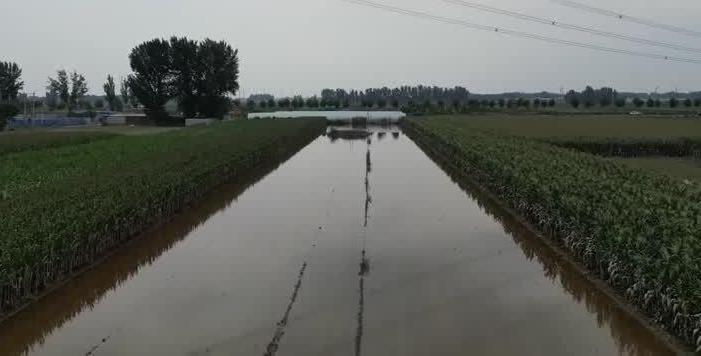China is facing major strains on a range of fronts – with major property developers sliding closer to default and now banking and food concerns from floods that damaged rice and corn crops in the north.
The latest banking data suggests a slump in business confidence.
Chinese banks extended 345.9 billion yuan ($47.8 billion) of new yuan loans in July, tumbling from June and falling far short of analysts’ forecasts.
Analysts polled by Reuters had expected new loans last month to fall sharply from 3.05 trillion yuan in June to 800 billion yuan, after record lending in the first half as the central bank tried to underpin a faltering economic recovery.
Broad M2 money supply grew by 10.7% in July from a year earlier, according to central bank data on Friday, below the poll’s forecast of 11%. M2 expanded by 11.3% in June from a year earlier.
Outstanding yuan loans expanded by 11.1% in July from the year before, compared with 11.3% growth the previous month. Analysts had expected an 11.3% growth.
ALSO SEE: Biden Likens China to ‘Ticking Time Bomb’ Due to Economic Woes

New storm approaching
Meanwhile, floods have damaged corn and rice crops in China’s key northern grain-producing belt, traders and analysts said, with more rain in the forecast as another typhoon approaches, threatening to add to global food inflation pressures.
The hit to China’s cereal crops – the full extent of which is not yet clear – comes as consumers worldwide face tightening food supplies amid India’s ban on rice exports last month and disruptions in Black Sea grain shipments caused by the war in Ukraine.
“The flooded area in the north will see some yield losses,” a Singapore-based trader at Chinese grain-trading company said. “We will have a clear picture on the extent of damage after flood waters recede.”
Northern China, still grappling with swollen rivers and floodwaters caused by Typhoon Doksuri two weeks ago, could see further crop damage with tropical storm Khanun.
On Thursday, China’s northern Hebei province upgraded its emergency response to the highest level after last week’s record flooding in preparation for potentially damaging downpours from the new storm.
Corn and rice output hit
Initial estimates show 4 million to 5 million metric tons of corn, or about 2% of the country’s output, have been affected by the floods, two trade sources said.
“We can’t confirm how much of that will be totally lost or damaged,” a second trader in Singapore said.
Corn prices on the Dalian Commodities Exchange fell 1.4% to 2,759 yuan ($381.34) per ton.
Floods are also likely to reduce rice output.
“Flood will indeed affect rice production in the northeast, and it may reduce rice production by 3%-5% in flood-affected areas,” Ma Wenfeng, senior analyst at Beijing Orient Agribusiness Consultant, told Reuters.
Fitch Ratings on Friday said heavy rain in China’s grain-producing region is likely to put upward pressure on global rice prices. Rice prices have already climbed more than 20% since India announced its ban on exports of non-basmati white rice.
China’s corn imports are expected to climb to an all-time high of 23 million tons in 2023/24, according to the US Department of Agriculture (USDA), up from 18 million tons a year ago, which is likely to mitigate the impact of flooding on supplies.
However, ample domestic rice inventories are expected prevent China from buying larger volumes from the international market, analysts said.
The decline rice production in China’s northeast is unlikely to result in larger imports as the country is largely self sufficient, Rosa Wang, an analyst at Shanghai-based JC Intelligence, said.
- Reuters with additional editing by Jim Pollard
ALSO SEE:
Typhoons, Floods, Heatwaves Cost China Economy $5.7bn in July
Typhoon Storms Hit Northeast China; Factories, Farms Swamped
India Emissions See Big Fall; Jakarta World’s Most Polluted City






















